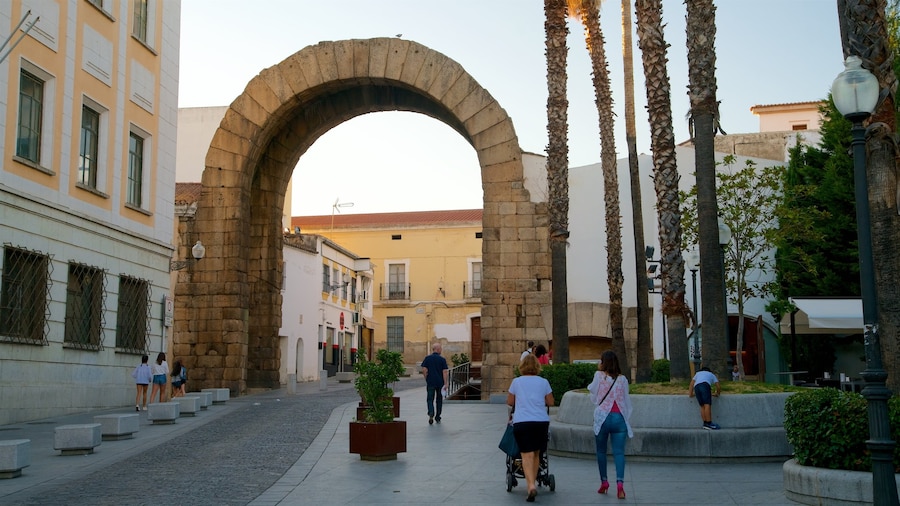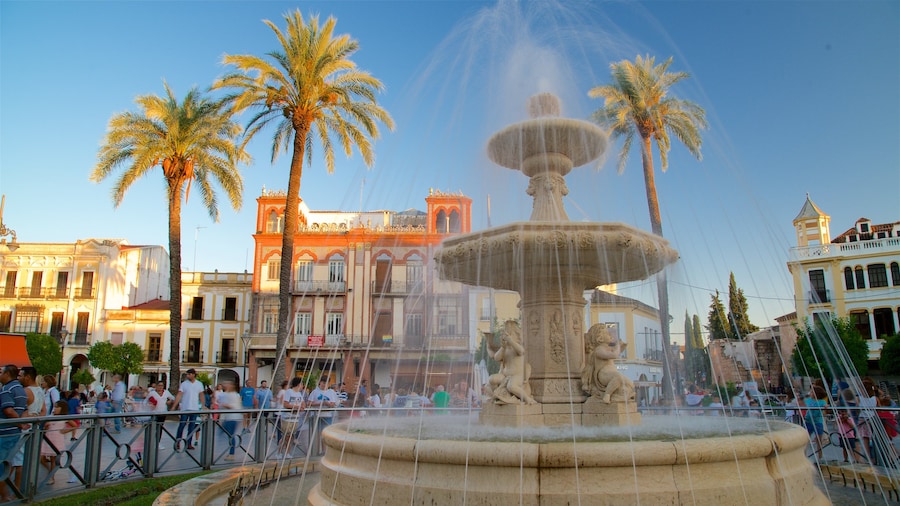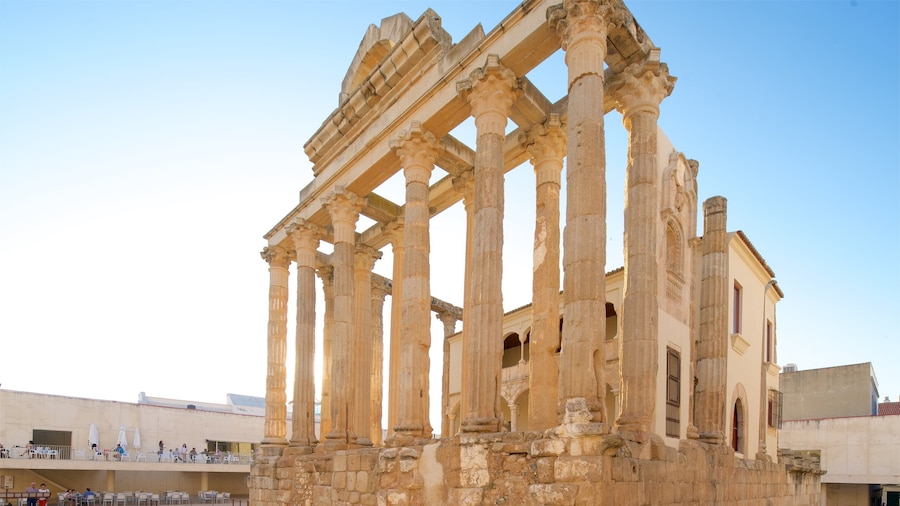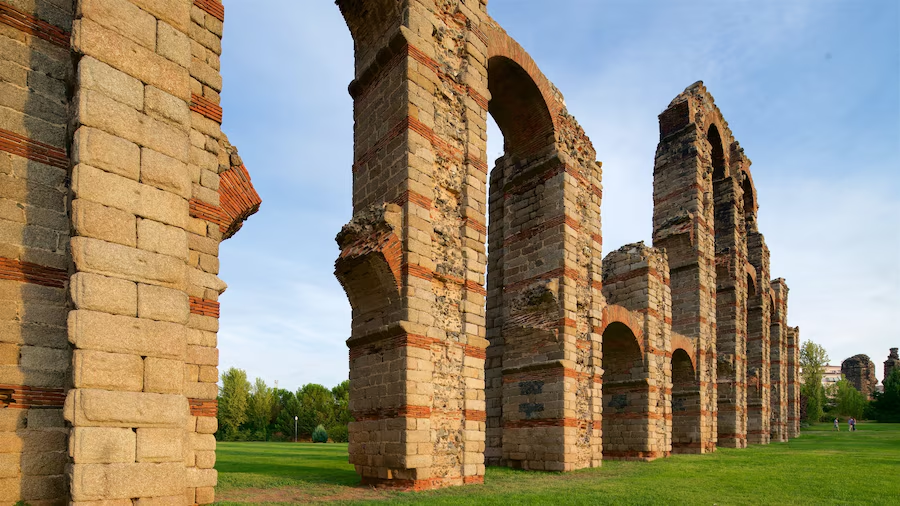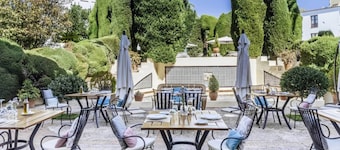Take a stroll under the massive arch of this beautiful suspension bridge and do some bird spotting in the surrounding park along the Guadiana River.
The Puente Lusitania was designed and constructed to protect the adjacent 1st-century Puente Romano from the heavy pounding of road traffic. The steel-and-concrete crossing was inaugurated in 1991 and accommodates both vehicles and pedestrians. The structure not only gives access to the city from surrounding outskirts but also connects the historic center with the modern metropolis. Stroll along the wide, raised central lane for pedestrians and bikes and enjoy panoramic views over the roofs of cars.
View the impressive feat of engineering from the banks of the Guadiana River. The Spanish engineering and architectural firm of Santiago Calatrava designed it. The bridge is an arresting sight for its large central arch, which lies between the two road decks and reaches a height of 112 feet (34 meters). From the arch are hung 23 pairs of steel rods.
Cross the bridge by walking along its pedestrian path. During the evening, this is a popular place to promenade under the illuminated archway. Whether you cross by day or night, rest on a bench and observe the river and city. The views are particularly stunning once the sun has gone down and you can see the lights reflected in the river. Once you have made your way across the bridge, consider making your return journey on the 2,000-year-old pedestrian-only Puente Romano about 2,000 feet (600 meters) upstream.
If you are near the Puente Lusitania during the day, go for a stroll along the eastern bank of the river, an area of parkland known as La Isla (the Island). Your route will pass several islands where you may see such bird species as gulls, terns, squacco herons and booted eagles.
The eastern end of the Puente Lusitania is at the edge of Mérida's historical center, about a 5-minute walk from the Plaza de España. Other nearby Mérida attractions include the Roman arch Arco de Trajano and the 9th-century Arab fortification Alcazaba.


